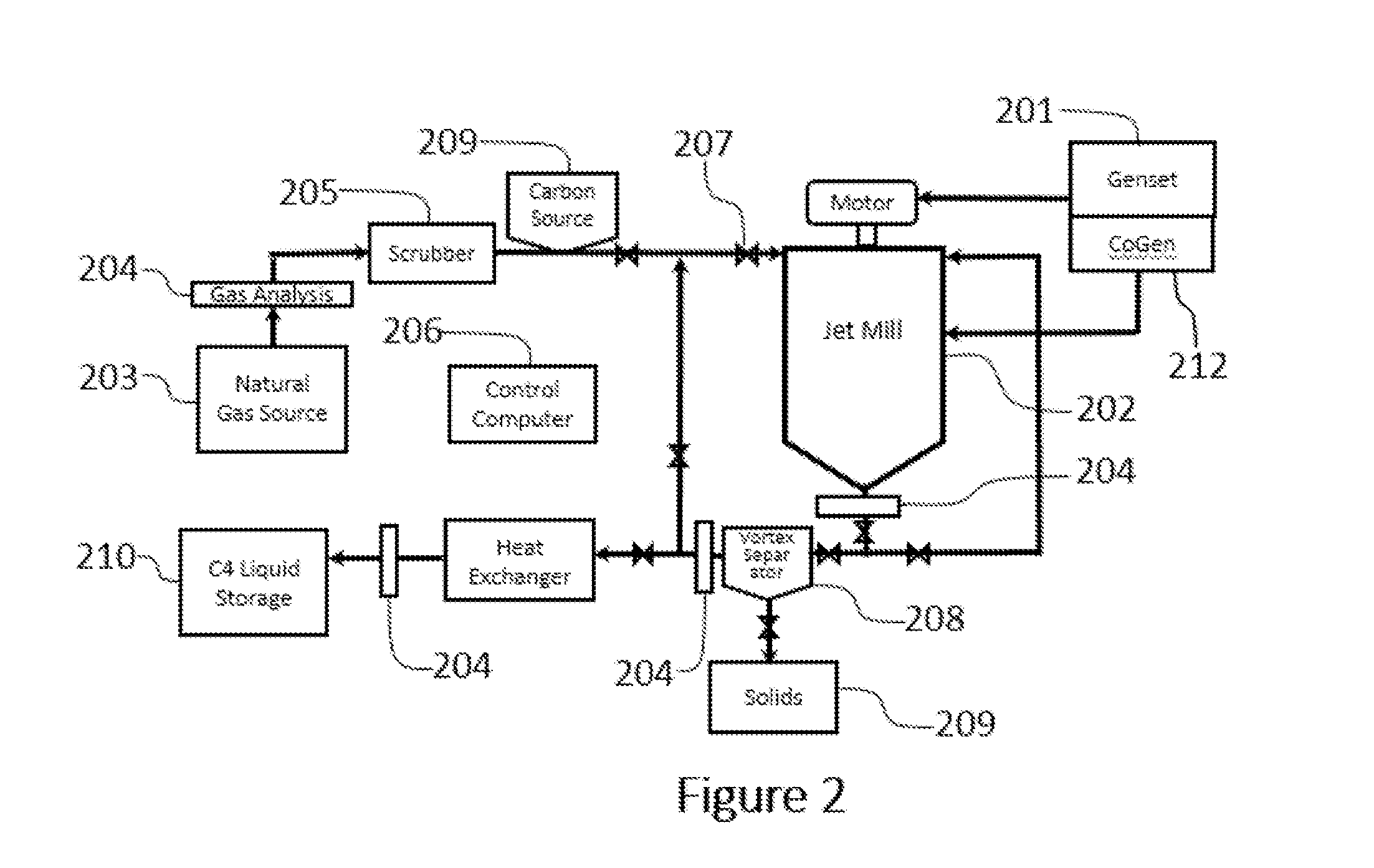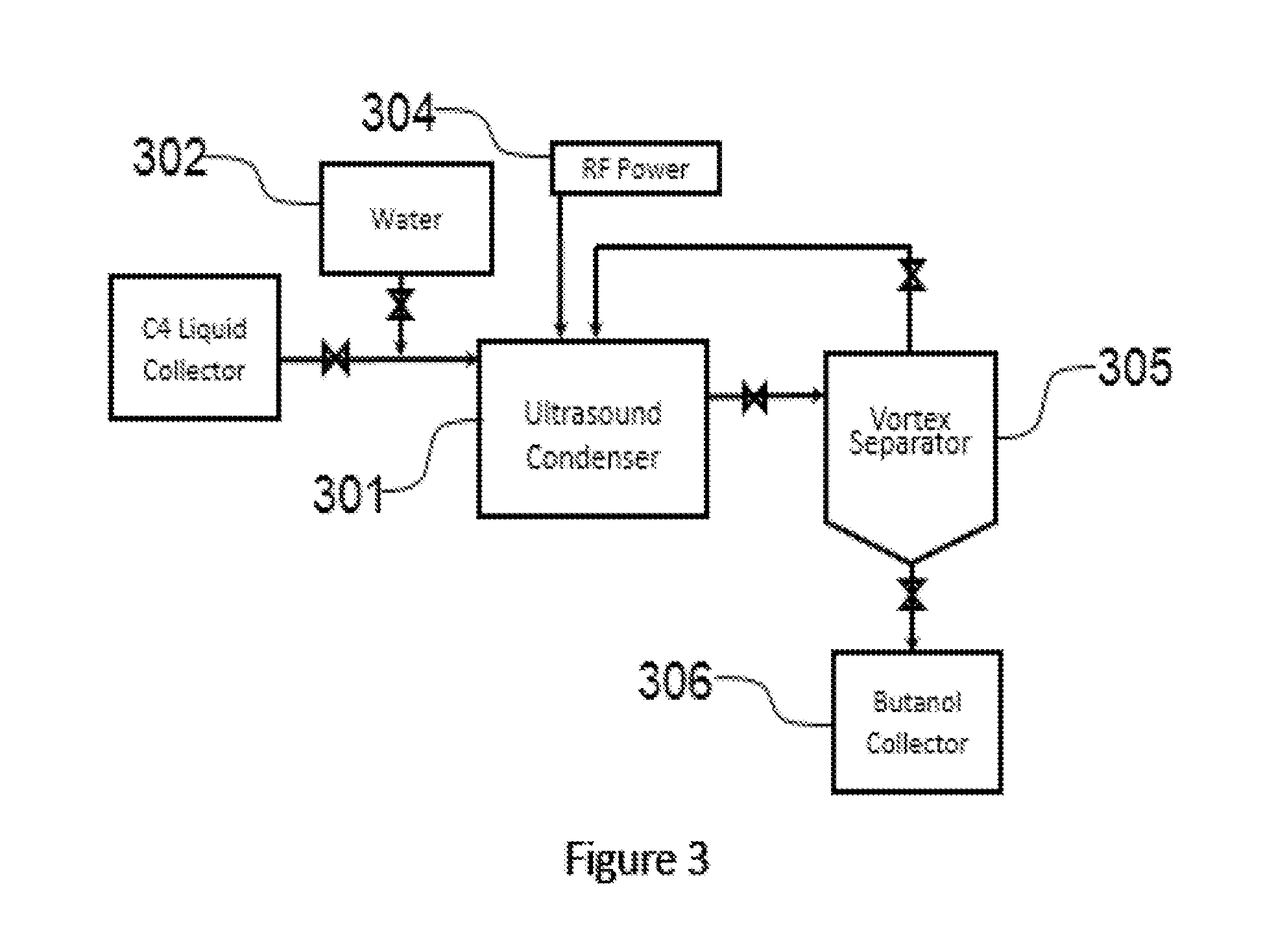Non-fischer-tropsch process for gas-to-liquid conversion using mechanochemistry
a gas-to-liquid conversion and non-fischertropsch technology, applied in the field of non-fischertropsch process for gas-to-liquid conversion using mechanochemistry, can solve the problems of high cost, complex and expensive, and the failure of oxygen-free sonic catalysis to break the methane bond, etc., to achieve low cost, eliminate costly process, and efficient natural gas conversion
- Summary
- Abstract
- Description
- Claims
- Application Information
AI Technical Summary
Benefits of technology
Problems solved by technology
Method used
Image
Examples
Embodiment Construction
[0051]In one embodiment, shale gas with substantial natural liquid content is converted into a marketable liquid by the synergy of mechanochemical and catalytic methods, which are the disclosed novelty of the process. The mixed-liquid output fuel product can be sold locally as fuel oil, furnace fuel, or boiler oil replacements, or as light alkanes for blending with gasoline. These products are marketable directly to local customers in every state without further processing. In a second embodiment of the invention, which is a Methane-to-Butanol process—water is added in a second stage to convert butane and C4 isomers into butanol, which is a desirable liquid transportation fuel; superior to gasoline in many respects, or blended as a “gasohol.” In a third embodiment, two or more reactors are employed, with added carbon and different catalysts, to produce various higher carbons such as hexane and octane.
[0052]The rapid expansion of the shale gas industry in recent years, the growing gl...
PUM
| Property | Measurement | Unit |
|---|---|---|
| frequencies | aaaaa | aaaaa |
| temperature | aaaaa | aaaaa |
| temperature | aaaaa | aaaaa |
Abstract
Description
Claims
Application Information
 Login to View More
Login to View More - R&D
- Intellectual Property
- Life Sciences
- Materials
- Tech Scout
- Unparalleled Data Quality
- Higher Quality Content
- 60% Fewer Hallucinations
Browse by: Latest US Patents, China's latest patents, Technical Efficacy Thesaurus, Application Domain, Technology Topic, Popular Technical Reports.
© 2025 PatSnap. All rights reserved.Legal|Privacy policy|Modern Slavery Act Transparency Statement|Sitemap|About US| Contact US: help@patsnap.com



